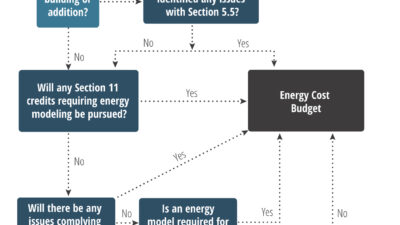
Suppose you are a generator service organization, maintaining customers’ equipment scattered across your state. Let’s further suppose you have extensive knowledge of the historical performance of every machine and know the battery voltage, fuel level, and controls condition of each generator, and that information is always current. Armed with that information, a well-trained technician could readily identify the machines that are at risk of operational failures, and prioritize the replacement of weak batteries or call in fuel where needed, to avoid the failure that is certain to happen without his proactive intervention.
Smart service implies the intelligent use of information to achieve a better service process, including:
- Detecting problems early
- Scheduling service trips efficiently
- Preventing predictable failures
- Minimizing customer downtime
Historically in the on-site power industry, technicians have gone from site to site to test machines, record conditions, and collect performance data. The data collection rate from this method was about four data snapshots per year or quarterly scheduled visits. While this process was the only method available a decade ago, no one would expect this method to be standard a decade from now. The times, they are a changing.
Convergence of technologies
In the last five years, two technologies have emerged, and the convergence of these two technologies has fueled the migration to smart service. First, generator controls have become smarter—computer controlled with increasingly sophisticated data sharing through standardized communication ports. Current generation controls are loaded with performance data, just looking for a user. Second, digital cellular data processes have simply exploded in speed as well as global coverage. This new infrastructure opens the door to high-performance data extraction and enhanced remote diagnostic capability. With proper system design, monitoring devices installed on remote gensets can pump continuous performance data into a database where the machine’s entire lifetime of operation is archived. This operational history can be used for governmental reporting purposes, warranty issue and service confirmation, remote diagnostics preceding a truck trip, performance trending, and especially advance detection and avoidance of equipment failures.
A key advantage that cellular data brings to the application is site independence. This means that a cellular data device can be powered up and operated in virtually all locations where gensets are used. In the rare instances of extreme remoteness, current generation satellite networks fill the communication need. The monitoring process can be powered by and enclosed with the generator system, with no need to enter the customer facility for traditional telephone or data access. The machines may be monitored in locations where wireless connectivity is the only option. The entire installation can be handled by the service tech, at the genset, without imposing on the customer.
Controls and communication
In recent years, generator manufacturers have designed their controls to support Modbus, which is an open protocol for data sharing. While every manufacturer has a different data-addressing scheme, the Modbus interface provides a common physical interface simplifying connection to their equipment. This interface commonly provides access to a large array of alarm points as well as analog performance data, such as fuel level, battery voltage, engine temperatures, oil pressures, phase volts and amps, and such. This kind of performance data is standard in controls from Generac, Kohler, Cummins, Caterpillar, Basler, Woodward, and Deep Sea, among others. Today, there is good opportunity to extract key data across all major brands.
For an experienced genset service technician, access to such key performance data is essential to diagnosing the health and adequacy of the remote machine. Often, machine owners add loads to the generator-supported circuits, potentially exceeding the machine’s power limits. By observing the real-time utility power demand handled by the transfer switch, excessive demand alarms may be produced indicating that the genset could face an overcurrent shutdown situation. Sometimes UPS systems refuse to take power from the genset, resulting in intermittent demand when operating on emergency power. In some equipment, differential pressures across oil and fuel filters provide an indication that the filters need replacement. In all machines, the depth and duration of battery voltage during crank cycle provides insight into the remaining capacity of the starting battery.
Aside from visual inspection for fluid spills, remote data acquisition can do virtually everything an on-site service trip can accomplish. The critical difference is that remote monitoring performs the data acquisition and analysis every second of every day. There’s no comparison between the tens of millions of tests per year performed by remote data versus four snapshots per year in the “data by truck” model. Figure 1 shows an actual block heater failure, indicated by the dramatic drop in block temperatures during the week shown. Figure 2 shows an activity listing for an installed genset. Every operation of the machine, throughout its installed lifetime, is logged and archived.
Applying smart service
In the industry, it is common for alarms that appear on a genset control to be classified as sporadic, incidental, or nonrepeatable glitches that come from the machine’s being connected to, and at risk to the utility grid. These alarms are cleared by switching the control to “off” and back to “auto,” with no way to reproduce the alarm. Until the alarm is cleared, however, the genset may not be available for service.
Historically, a customer call to the service company, indicating that an alarm is present on the enunciator, resulted in a technician driving to the site, perhaps hours away, simply to flip a switch to clear a nonpersistent alarm condition. That trip is commonly not a billable service event. The customer had to wait for hours, the service tech used up valuable hours, and both parties lost value.
Today, some brands of genset controls allow remote clearing of these alarms. A good remote data process provides instant notification of the alarm condition to the service organization and within minutes of the initial event, the (now smart) service organization can clear the condition, remotely start the engine to confirm the availability of the genset, and notify the machine owner of the final result. In the 50 percent of cases where no recurring alarm is encountered, the service manager and the machine owner can calmly discuss whether a (billable) service trip is desired to double-check the results. In the remaining 50 percent of cases, a service dispatch may be made with a good understanding of the details of the machine condition before a tech jumps into a service truck.
Using statistics and prognostics
A large majority of genset failures come from four familiar sources: battery, fuel, block heater, and persistent controller alarms. These same failure modes are found across all brands and sizes and are caused by either consumables or user errors. No matter what the brand, without some monitoring, the battery will eventually die; the fuel will eventually run out; the block heater will eventually fail; and someone will eventually leave the control in the “off” position. The most important point is that all of these failures are avoidable with the most basic monitoring methods, and with simple trending processes, they offer strong prognostic opportunity by providing advance warning of future failure.
When we think of prognostics, we have commonly considered vibration sensors to detect bearing wear, with the intention of avoiding a catastrophic engine failure. This focus has its place, but in power generation, prognostics represent a far greater value. An average genset owner will never have a broken crankshaft or connecting rod.
For genset owners, a catastrophic failure is a “fail-to-start” condition when there is a power outage. That failure usually comes from the four sources mentioned above. When a low fuel alarm is detected, it is a clear warning that without some intervention, the machine will fail to operate in the near future. When a battery charger alarm is sent, it is essentially a guarantee that the engine will experience a “fail-to-start” within a week. Even the most basic remote monitoring processes can prevent nearly all of the failures that genset owners consider catastrophic.
Remote data isn’t just about failure. In fact, failures occur very infrequently. That same data can be applied statistically to provide a high confidence level to the machine owner. For example, with the prior knowledge (and confirmation) that his machine has operated without fault for the previous year, the battery is strong, and the fuel is full, the genset owner will be confident his machine will operate, should it need to, in the next week. Weekly exercises are a key component in establishing the data history and trending that is the underpinning of smart service.
Future trends
We have to remember that no one buys a genset for fun. The purchase is made to protect businesses or homes from losses associated with utility failure. Jobs and lives are on the line, and genset owners typically want to use every tool available to insure that their machinery is functional and available at all times. Few genset owners are capable of understanding and diagnosing their equipment themselves. They feel agonizingly at risk. When their chosen service organization has the tools for 24×7 remote real-time monitoring, control, diagnostics, and repair, that feeling of risk is replaced with confidence.
The movement is underway to incorporate remote monitoring into new machinery. While major manufacturers have historically avoided long-term connection with installed equipment, the trend is changing. The opportunity to use smart service for warranty and extended warranty management is being embraced, and factory-level commitment to end user success and satisfaction is emerging.
Remote data-enabled smart service benefits the machine owner through failure avoidance, fewer service visits, and minimized downtime. It benefits the service organization by minimizing truck trips, technician time, and cost while delivering a higher level of service to the customer. It benefits the manufacturer through improved perception of product quality by preventing the consumables-based end-user failures. As acceptance grows and volume increases, the cost of remote data declines, enabling an acceleration of smart service application. We may have reached the tipping point at which the expectation of remote data-enabled smart service will be become the norm in the marketplace.
– Jarrett is the vice president of OmniMetrix LLC in Buford, Ga.



